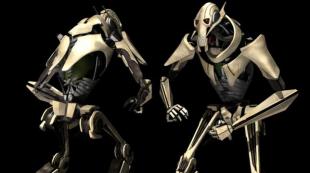The world around the message on the topic of astronomy
slide 1
slide 2

Astronomy is the science of cosmic bodies, the systems they form, and the universe as a whole. The word astronomy comes from two Greek words: astron, star, and nomos, law.
slide 3

Astronomers are people who study the stars.
slide 4

Astronomy is the oldest of the sciences. The first astronomers were called stargazers. It is known that even cavemen observed the starry sky, because its drawings were found on the walls of caves.
slide 5

The Babylonians were skilled observers, as were the Egyptians, who built pyramids according to the positions of the stars in certain constellations.
slide 6

People have watched the stars throughout their history. Records of astronomical observations indicate that this is approximately 5,000 years ago.
Chinese astronomer, 1675
Slide 7

Much later, instruments come to the aid of astronomers. This is what telescopes of the past and present look like.
Slide 8

Modern telescopes are very huge and complex devices that allow you to look into the depths of the universe for millions of light years. However, there are devices that allow you to look, or rather hear, even further - these are radio telescopes, where giant antennas simply “listen” to the Universe.
Slide 9

From the point of view of astronomers, the world is the Universe or Cosmos. These are other planets and stars, our planet Earth, its plants and animals, you and me - this is the whole Universe.
Slide 10

Scientists believe that our Universe arose as a result of the so-called Big Bang, which occurred about 15 billion years ago. At the same time, a dense hot ball was formed, which began to rapidly expand, turning into the Universe. Many astronomers believe that the expansion continues today.
slide 11

Our life is possible only thanks to the Sun. People understood this even in ancient times and revered the Sun as a deity. They called it differently: in ancient Greece - Helios, in Egypt - Ra, and our Slavic ancestors - Yarilo. Hymns were composed in honor of the Sun.
Yarilo
Helios
slide 12

Hymns were composed in honor of the Sun. Here is one of the hymns of the ancient Greek poet Homer: The sun in eternal motion makes the luminaries turn pale, the sun fills the limits with the purple radiance of the earth. The sun is a friend of the farmer, favorably to all sailors. The sun is the deity of days and nights, the crown and the beginning. Only his one of the gods reigning in the world, We are given to see ...
slide 13

To observe the vast expanses of space, special modern instruments and observatories are needed, so scientists use entire complexes of powerful telescopes, which are located in places where the air is especially transparent.
Observatory
Slide 14

The oldest observatories were built over seven thousand years ago. At first, these were circles of huge stones - megaliths, which formed astronomical instruments. Around 2800 BC In Britain, the construction of the Stonehenge complex began, which may have served as an observatory.
slide 15

Among the ancient civilizations of Egypt, Babylon, Greece, and later China, India, and before the discovery of America by Columbus, astronomy was held in high esteem. Accurate observations of the starry sky were carried out there, and for this, grandiose structures were erected, which have survived to this day.
Temple of the Sun in Mexico
slide 16

In the Middle Ages, the life of astronomers turned out to be very difficult, since their knowledge of the Universe was in many respects contrary to religion, and for the idea that the Earth was spinning, it was completely possible to get on the fire, which happened to the philosopher Giordano Bruno.
ancient indian observatory
Slide 17

How did the solar system come into being?
The solar system formed from a huge cloud of gas and dust about 5 billion years ago. Some parts of the cloud turned out to be denser. Particles of gas and dust in these areas began to approach each other under the influence of forces of mutual attraction. Over time, they formed a ball. The ball condensed, decreased in volume and warmed up.
Slide 18

Gradually, it began to glow, turning into the embryo of the Sun, which took about 100 thousand years. The “embryo” rotated faster and faster, scattering part of the substance in space. At the same time, he continued to shrink and warm up. Finally, the "embryo" warmed up for the occurrence of a nuclear reaction; a huge amount of energy began to be released, and a new star shone. The ring of previously discharged matter began to gather into clots.
Slide 19

These clumps gradually became larger and larger, located at different distances from the Sun. Large clumps became the planets we observe today. The smaller ones turned into satellites of the planets, and the very small ones became asteroids.
Slide 20

The Sun is the closest to the Earth…… It is a huge…… cosmic body. The sun has the shape of …… The diameter of the Sun is …… times the diameter of the Earth. The mass of the Sun is ...... times greater than the mass of our planet. The distance from the Earth to the Sun is ...... kilometers. The temperature on the surface of the Sun is ...... degrees, and in its center - ...... degrees.
Enter the missing data in the text using the textbook.
slide 21

The sun is the closest to the Earth ... (star). This is a huge ... (hot) cosmic body. The sun has the shape of ... (ball). The diameter of the Sun is ... (109) times the diameter of the Earth. The mass of the Sun is ... (330 thousand) times the mass of our planet. The distance from the Earth to the Sun is … (150 million) kilometers. The temperature on the surface of the Sun is ... (6.000) degrees, and in its center - ... (15 - 20 million) degrees.
slide 22

The sun forms the center of our system. 9 planets revolve around it. 4 small planets located closest to the Sun - Mercury, Venus, Earth, Mars - are called internal. They have a hard surface. The remaining 5 planets are called outer. These are 4 gas giants - Jupiter, Saturn, Uranus, Neptune, as well as a small solid planet made of stone and ice - Pluto.
slide 23

Mark each statement with a code sign, agreeing with me or disagreeing: 1. The Earth is one of the planets of the solar system. 2. The sun is the closest star to us, a hot ball of gas. 3. The mass of the Earth is 330 thousand times the mass of the Sun. 4. Specialists who study astronomy are called astronauts. 5. The earth moves around the sun. 6. You can observe the Sun by looking through binoculars or a telescope. pipe.
- Yes
- No
- I don't know
slide 24

An online lesson on this topic can be viewed: http://interneturok.ru/ru/school/okruj-mir/4-klass/tema/mir-glazami-astronoma
Website of Elena Beryukhova "School ABV" Design: Elena Beryukhova http://shkola-abv.ru
Who are astronomers and what is astronomy? Think!
The word "astronomy" comes from two Greek words: - "astron" - a star and "nomos" - a law. Astronomy is the science of cosmic bodies, the systems they form, and the universe as a whole. An astronomer is a specialist in astronomy.
Astronomy is the oldest of the sciences. The first astronomers were called stargazers. It is known that even cavemen observed the starry sky, because its drawings were found on the walls of caves.
Much later, instruments come to the aid of astronomers. This is what telescopes of the past and present look like.
From the point of view of astronomers, the world is the Universe or space. Think! How did the universe originate?
Supposedly, the Universe arose as a result of an unimaginably powerful Big Bang about 18 billion years ago. By the time of the explosion, all the matter of the Universe was compressed into one incredibly hot mass. The explosion scattered him all over the place. Galaxies, stars and planets were formed from this primary substance.
There are countless stars in the universe. One of them is the Sun. 8 planets revolve around the sun, including our native Earth. In addition to the planets, other celestial bodies (comets, meteorites, asteroids) move around the Sun. Mercury Neptune Uranus Saturn Mars Venus Jupiter Earth
A characteristic feature of comets is that when approaching the Sun, they develop and increase the tail, always directed away from the Sun. Sometimes comets are so bright that they attract everyone's attention. In the past, the appearance of bright comets caused fear in people. It is interesting!
An asteroid (minor planet) is a relatively small rocky celestial body, many of which revolve around the Sun. The first asteroid, Ceres, was discovered in 1801; since then, they have been constantly searched for and new ones are regularly discovered. It is interesting!
Meteorites are stones or pieces of iron that have fallen to Earth from interplanetary space. These are fragments of asteroids and comets. Meteorites are divided into "fallen" and "found". It is interesting!
The sun and the celestial bodies moving around it make up the solar system.
Our planet Earth is part of the solar system. The Earth moves around the Sun at a speed of 30 km per second. At the same time, together with the Sun, it moves among other stars, and together with them - in the space of the Universe.
What do you know about the Sun? Celestial body Gives light and heat Has the shape of a ball
Textbook work. Read the article on p. 6-7 textbook.
The Sun is closest to Earth.... This is a huge ... cosmic body. The sun is shaped... The diameter of the Sun is ... times larger than the diameter of the Earth. The mass of the Sun is ... times greater than the mass of our planet. The distance from the Earth to the Sun is … kilometers. The temperature on the surface of the Sun is ... degrees, and in its center - ... degrees. Insert the missing data into the text. Write the words on a piece of paper in a column.
star hot ball 109 330 thousand 150 million 6 thousand 15 - 20 million Check yourself:
What does astronomy study? Give examples of celestial bodies. What is the solar system? 4. How to observe the Sun so as not to spoil your eyesight? Let's summarize:
Klimanova Natalya Sergeevna, primary school teacher, secondary school No. 1351
Near space. The astronomer sees the world much wider and more than the average man in the street. He sees through telescopes (infrared, ultraviolet, radar and optical) our Universe: myriads of stars, planets, asteroids, comets...
So, let's try to look at the world through the eyes of an astronomer. Into a telescope. The first space world that we will see is the world of the solar system, that is, the planets and small bodies that revolve around the sun. Red Mars, Venus glowing with a blue glow, the circle of Mercury like a fly against the background of the colossal hot ball of the Sun, the giants Jupiter and Saturn, surrounded by magic rings - this is what can be seen very well and clearly even not in the most powerful telescope.
Far space. But what happens beyond Saturn, near the most distant planets of the solar system Uranus and Neptune, because these depths are not so well illuminated by the Sun? Real dark abysses reign here... And beyond Neptune, the small bodies of the Kuiper belt glow a little: meteorites rush, small planets rotate, tailed comets march...
Super-powerful telescopes already allow us to penetrate into the depths of our Milky Way Galaxy and view other galaxies, between which there are huge abysses of cosmic voids. Astronomers see the center of our Galaxy with a gigantic rotating galactic disk that is simply incomprehensible to us in size, they see a black hole in the very center of the galaxy, dead black extinguished stars, bright red and as if swollen fading luminaries, white and blinding supernovae ... Planets-dwarfs and giants, surrounded by the most incredible gas clouds, rings, glows, dozens of small planets, that is, satellites ...
Space in motion. And of course, the world before the eyes of the astronomer is by no means frozen and not icy, as space seemed to people before. Either the flash of the birth of a star will strike with rays, then the planet will explode from a collision with a large asteroid, then something will disappear in a black hole ... The astronomer sees an incredible and still almost completely unexplored, unfamiliar world ...
1. Are you interested in learning about stars and planets? If yes, why? Write.
I'm interested in learning about planets because life like ours or animals we don't have can be found there. And the stars shine so beautifully and are so far away that I can learn as much as possible about them.
2. Using the textbook, write down the definitions.
Astronomy - it is the science of celestial and cosmic bodies.
Universe - this is the space in which the planets, stars and other celestial bodies are located.
Solar system - it is the Sun and the celestial bodies moving around it.
3. Using the textbook diagram, sign the planets of the solar system.
4. The wise turtle offers you a task to train your memory and attention. Number the planets in order of their distance from the Sun (in blue squares); in the order of their approach to the Sun (in red squares). Check yourself according to the diagram in the textbook.

5. Using the textbook, enter digital data instead of gaps. Use this data when talking about the Sun.
Sun Diameter 109 times larger than the Earth's diameter. The mass of the Sun is approximately at 330,000 (330 thousand) times more the masses of our planet. The distance from the Earth to the Sun is 150 million kilometers . The temperature on the surface of the sun reaches 6000 degrees, and in the center of the Sun presumably 15 - 20 million degrees.
6. Here you can make notes for your message on the task of the textbook (p. 8).
Find in additional literature, the Internet, new scientific information about the Sun or information about interesting celestial bodies of the solar system - comets, asteroids. Prepare a message.
Message subject:
Message plan:
- Discovery of Pluto
- On the surface of Pluto
- Dimensions of Pluto
- Why is Pluto not a planet but an asteroid?
- New riddles
Important information to report:
Pluto is an asteroid that was considered a planet for decades
On February 18, 1930, 23-year-old astronomer from the United States Clyde Tombaugh discovered a new celestial body, which the world scientific community has identified as the ninth planet of the solar system. The new planet was named Pluto - in honor of the ancient Roman god of the underworld. The name came up with an 11-year-old schoolgirl from Oxford, Venice Burney, who was keenly interested not only in astronomy, but also in ancient mythology.

And indeed, the name of the god of the underworld perfectly suited the new planet. Pluto turned out to be a very cold and gloomy world. Its bowels consist of stone and ice, and the temperature on the surface is -230ºС. There is an atmosphere on the surface of the planet, but it is very rarefied and filled with nitrogen, methane and carbon monoxide - gases unsuitable for human breathing.

For more than 70 years, Pluto was officially considered a planet, because at first, according to the calculations of scientists, its dimensions seemed comparable to the Earth, and then to Mars. But after the discovery of Pluto's moon Charon, astronomers were able to calculate the dimensions more accurately. It turned out that the diameter of Pluto is one third smaller than the diameter of the Moon, the Earth's satellite.

Disputes of scientists lasted almost 30 years. Someone considered Pluto a planet, someone an asteroid, and someone a dwarf planet. As a result, on August 24, 2006, the International Astronomical Union presented a new precise definition of the concept of "planet". It turned out that Pluto did not fit this new definition at all and it was immediately reclassified into a minor planet or, as they are also called, an asteroid.

Surprisingly, even this event did not stop the debate of astronomers over Pluto. Now some scientists are trying to prove that Pluto and Charon make up a double planet. So perhaps Pluto will bring many more surprises and new discoveries to earthlings.

Source(s) of information: Internet, books and encyclopedias.
Lesson type: combined
Target
- the formation of a holistic picture of the world and the awareness of a person's place in it on the basis of the unity of rational-scientific knowledge and the child's emotional and valuable understanding of personal experience of communication with people and nature;
Characteristics of students' activities
Meet with a textbook and teaching aids on the "World around" for grade 4, with a spread "Our projects" in part 1 of the textbook, to choose projects to complete. Understand educational tasks of the section and this lesson, strive to fulfill them. Tell about the world from the point of view of an astronomer. Work in pairs: study diagram of the structure of the solar system, list planets in correct order simulate structure of the solar system extract from the textbook digital data about the Sun, write out them in a workbook. Working with adults: finding in additional literature, Internet material, prepare messages. Formulate conclusions from the studied material, reply for final questions and evaluate achievement in the classroom.
Planned results
Subject (know, be able)
Know the name of our planet, the planets of the solar system. Understand general conditions necessary for the life of living organisms. Be able to use the knowledge gained to satisfy the cognitive interest about our planet.
Metasubject (Regulatory. Cognitive. communicative)
P. - to compare according to the specified criteria.
R. - take into account the guidelines for action identified by the teacher in the new educational material in cooperation with the teacher, learn to express one's own assumption.
K. - be active in interaction to solve communicative and cognitive tasks
Personal Outcomes
The internal position of the student on the basis of a positive attitude towards school. Educational and cognitive interest in new material and ways to solve a new problem.
Basic concepts and definitions
Universe. Space . Celestial bodies, stars, planets, Sun, Earth, Moon
Preparing for the assimilation of new material
We learn what astronomy, the Universe, the Solar system are. We will learn to talk about the world from the point of view of an astronomer, to make a model of the solar system.
Remember what celestial bodies you know.
Astronomy is the science of celestial, or cosmic, bodies. The word astronomy comes from two Greek words: astron, star, and nomos, law. This science appeared in antiquity, but even now it is trying to tell about the world from the point of view of an astronomer. Use the words for this: celestial bodies, stars, planets, Sun, Earth, Moon. Listen to other guys. As a class, write the most complete story.
Learning new material
UNIVERSE AND SOLAR SYSTEM
From an astronomer's point of view, the world is Universe, or Space. So they call all the vast space with stars, planets and other celestial bodies. Stars are huge, red-hot celestial bodies that emit light. Planets are cold celestial bodies that do not emit their own light.
There are countless stars in the universe. One of them is the Sun. Eight planets revolve around the Sun in their orbits, among which is our planet Earth. In addition to the planets, other celestial bodies, such as comets, move around the Sun. The sun and the celestial bodies moving around it are solar system.
SUN
There are such riddles: “What is higher than the forest, more beautiful than light, burns without fire?”, “I will get up early, white and ruddy, but as soon as I loosen my golden hair, let me go outside the city - both man and beast will rejoice ... " .
What are these riddles about? Of course, about the Sun.
People have long treated the Sun with love and special respect. After all, already in antiquity, they realized that without the Sun, neither a person, nor an animal, nor a plant can live.
You already know that the Sun is the closest star to Earth. Like other stars, this is a huge hot cosmic body that constantly radiates light and heat.
From Earth, the Sun appears small. In fact, it is so large that our planet is quite small in comparison with it. If you imagine the Sun the size of an orange, then the Earth will be the size of a poppy seed. Scientists-astronomers have established that the diameter of the Sun is 109 times the diameter of our planet. And the mass of the Sun is about 330 thousand times the mass of the Earth!
Why does it seem small to us? It's all about the huge distance between it and our planet. This distance is about 150 million kilometers
What is the temperature of the Sun? Very, very high. It's hard for a human to even imagine. We know that when our body temperature rises above 37°, we have a fever. Water boils at 100°C, steel melts at 1500°C. The temperature on the surface of the Sun reaches 6 thousand degrees, and in the center of the Sun, presumably 15-20 million degrees.
Attention! The sun is shining very brightly. It is strictly forbidden to look at it through binoculars, a spyglass, a school telescope, and simply with the naked eye. This may impair vision. Only through dark protective glasses can you look at the Sun, and even then not for long - 1-2 minutes.
Comprehension and understanding of the acquired knowledge
Review the diagram. Find the sun and planets. Mentally complete the diagram in such a way as to imagine the Sun completely, and the planets revolving around it. Note that the planets move in slightly elongated orbits.
Using the diagram, list the planets: a) in the order of their distance from the Sun; b) in the order of their approach to the Sun. Using the diagram as a reference, build a model of the solar system
Let's discuss!
It is often said: "Earth is our space home, our space ship." Why can you say that about the Earth?
Independent application of knowledge
check yourself
What does astronomy study? 2. What is the Universe? 3. What is the solar system? 4. How to depict the solar system using a model? 5. Briefly tell about the Sun. 6. How to observe the Sun without spoiling your eyesight?
Conclusion
Astronomy - science of celestial bodies. The sun and the celestial bodies moving around it make up the solar system. Earth is one of the planets in the solar system.
Homework assignments
Write in the dictionary: astronomy, astronomer.
Play with your friends: build a living model of the solar system! Let everyone be called by the name of one of the planets, and someone will be the Sun. Make nameplates and take them in your hands. Stand around the Sun so that you correctly convey the sequence of the planets.
And now - on the road around the sun! Try to move in such a way that the position of the planets is not disturbed. The one who "stumbles" out of orbit is out of the game. Whoever stays in orbit the longest wins.
Find in additional literature, the Internet, new scientific information about the Sun or information about interesting celestial bodies of the Solar System - comets, asteroids. Prepare a message.
The world through the eyes of an astronomer.
PresentationWorldeyesastronomer
Astronomy 1. What does astronomy study. Why do stars twinkle - Academy of Entertaining Sciences
Point of no return of the Universe. What happened before the Big Bang! An interesting film about the creation of the universe!
WHATPEROUTSIDEUNIVERSE?
Sources of information:
SCHOOL OF RUSSIA GEF A. A. Pleshakov textbook, E.A. Kryuchkov workbook World around 4th grade Moscow "Enlightenment" 2014
Presentation Hosting the world








